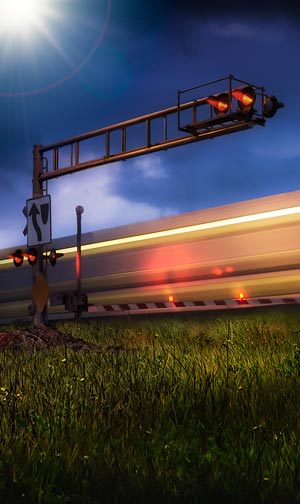NTSB Joins Investigation of NJ Rail Bridge Collapse as HAZMAT Cleanup Keeps Residents’ Lives in Limbo
(Paulsboro, New Jersey – December 3, 2012)
As federal investigators from both the National Transportation Safety Board and the Federal Railroad Administration collected and examined information in regard to Friday’s derailment of a CSX train hauling, among other hazardous materials, vinyl chloride, when a Conrail-owned and maintained bridge collapsed into Mantua Creek in Paulsboro, NJ, near Philadelphia, PA and just across the river from Philadelphia International Airport, spilling at least one carload of the material into the creek that feeds the Delaware River, signal malfunction became an added factor.
NTSB Chairman Deborah Hersman said the train crew told investigators that the signal controlling access to the bridge, a swing span structure that had been heavily damaged and then repaired after an August, 2009 coal train derailment, was red, and that such aspect was unusual for that time of day (around 7:00 A.M.).
However, the NTSB said it was only the early morning before Friday’s accident that the bridge had experienced operational failure. Hersma said that at 3:15 A.M. Thursday, a train crew found the bridge’s rails to be about four inches out of alignment. After repeated attempts by the crew to position the bridge by radio the signal finally worked, the four sliding mechanisms caused the swing span of the bridge to line up with the stationary spans on each side of the swing span, the signal went to green, and the train proceeded across. After that, four more trains crossed without problems before the train Friday morning arrived and its crew found the signal red.
Failing in an attempt to change the red signal via a radio transmission, the conductor visually inspected the bridge, and then contacted the dispatcher for permission to cross the bridge against the red signal. After being given permission by the dispatcher, the southbound train proceeded across the bridge at a speed of 8 mph, but only the two locomotives and first five cars crossed the bridge before seven cars, including four carrying vinyl chloride, derailed. One of the cars carrying the volatile commodity ruptured, and shortly after, schools were put on lockdown, businesses told to close, and residents forced to evacuate as the sweet-smelling gas which can cause ill-effects ranging from respiratory problems to liver cancer permeated the atmosphere.
As the area within 12 city blocks of the accident scene were evacuated, residents were told to be ready to spend three days, if not longer, away from home, and were given only minutes to comply with the order. Students at three Paulsboro schools were forced to stay inside their buildings, with neither entrance nor egress permitted.
At a news conference, Conrail spokesman John Enright said that the company is concerned with safety and was cooperating with authorities, but refused to take any questions.
Under FRA regulations, railroads themselves are responsible for inspecting their own bridges on an annual basis, and the FRA can inspect them if there is cause for concern. The FRA last inspected the bridge in January, 2010, after it had been rebuilt, and Conrail’s last inspection was just last month.
More than 70 people who were suspected of having inhaled the hazardous gas went to emergency rooms at two area hospitals. Over 100 motel rooms were provided for the displaced residents, while pets in the evacuated area were taken to a local animal shelter until some were later reunited with their owners at pet-friendly motels.
By Monday, Paulsboro schools had given up on reconvening, and were closed until the situation stabilizes, while 100 residents remained out of their homes and delivery and dispatch of rail cars to area industries was under indefinite suspension. No prognosis of how long the situation might remain the same was given.


